At Archadeck of NE Dallas-Southlake, every project we build is completely dynamic and unique to the client’s home and to their tastes and preferences. When it comes to determining the roof style for your new covered patio, porch or screened porch addition, many factors come into play.
When we sit down to design your roofed addition, we take more into consideration than just how that type of roof will work in unison with your home. There are more elements than just beauty when deciding which style of roof is best for your individual home and circumstances. There is no one style fits all when it comes to choosing the right roof style for your project.

Notice how this Forney, TX, covered patio addition by Archadeck of NE Dallas-Southlake mimics the existing roof style of the home, even down to the arched details.
Two of the key components we take into consideration include your back-of-home configuration and the roof style(s) that already exist on your home. In a two-story home, the second story window configuration will often limit your roof style options. If there are second story windows, we don’t want to obstruct those windows so we will use a roof style that accomplishes that objective. In the same token, if your two-story home contains a cantilever as part of the design, this can inhibit a particular roof style or ability to tie into the existing roof. Your home may have one roof line or it may have multiple roof lines. We will often match the roof style of your patio cover or porch to the existing roof styles of the home, but not always. Existing roof lines, dormers, windows, cantilevers, skylights and bump out areas such as bay windows are also some of the factors we consider.
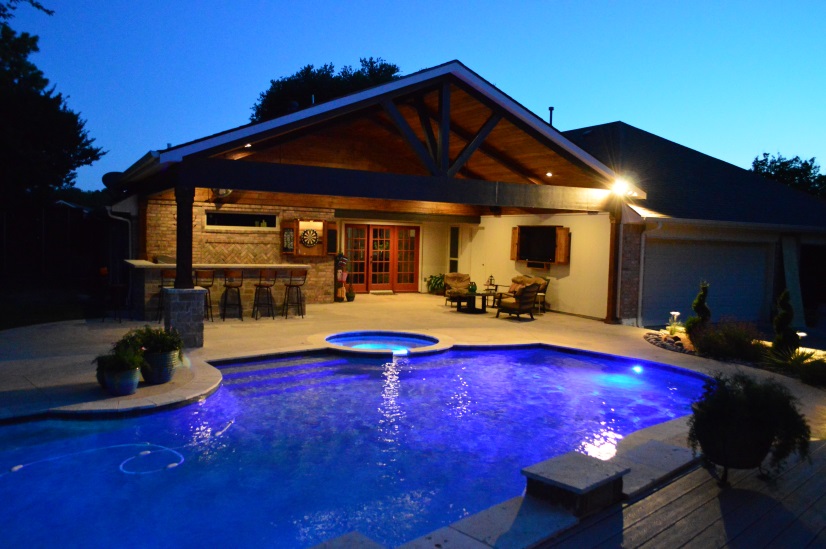
Gable-roof covered patio addition in Plano, TX.
What are the most common roof styles?
The three most common roof styles are gable, hip and shed. Each of which has pros and cons. For example, a shed roof attaches to the house and gently slopes down creating an elegant look that efficiently diverts water in a simple design. The benefit of a shed roof is that it is usually not as complex as a gable or hip roof, and can be more economical to build. Here are the most common roof styles to consider for your new roofed addition.

A hip roof has 3 or more sides that all slope downward from a common point.
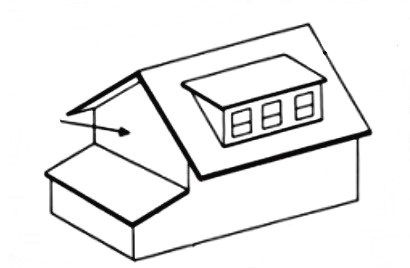
A gable roof is the most popular. It looks like a triangle with two sides sloping down from a center line.

A shed roof is a flat roof that slopes downward in one direction from the home.
Gable Roof
A gable roof is shaped like a triangle. To be more specific, a gable is a roof sloping downward from a central ridge that forms a gable on each end. A good bit of light enters an addition when the gable (or triangle end) is left open. The use of a gable roof overcomes the issue of loss of light that is often a source of concern for homeowners when considering a porch or other roofed outdoor addition. This roof style creates an open and airy effect and often enables the use of higher, vaulted or cathedral ceiling heights within the space which naturally enables more natural light to flow within the space, and through the windows or doors affected by the addition within your home.
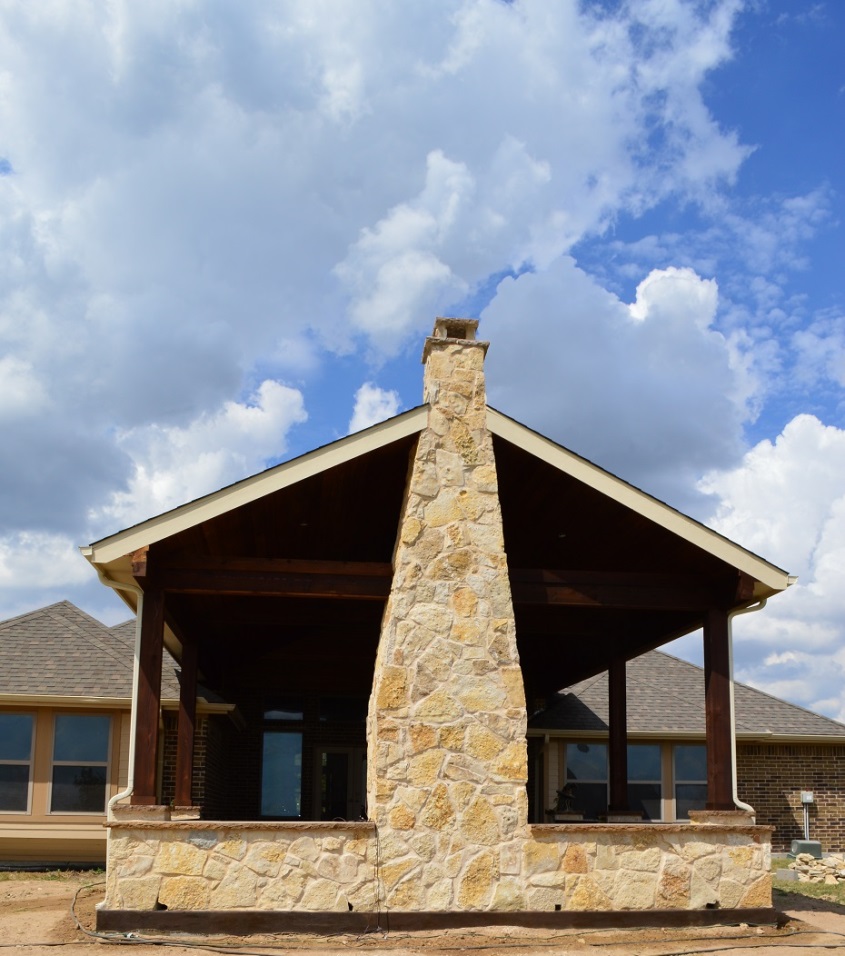
Notice how this gable roof patio cover in Rockwall allows natural light to freely flow within the back windows of the home.

Hip Roof
A hip roof shape has a high point in the middle and slopes downward in three or more directions from that high point. A hip (or hipped) roof essentially creates a pyramid shape. It is the most complex from a construction standpoint and may cost more than a simpler roof shape. This roof style is very popular with both traditional and more modern homes. A hip roof is aesthetically pleasing to the eye, especially from the inside. The geometric complexity adds more visual interest than a more traditional shape.
Here are a few examples of additions we have designed and built in the NE Dallas and Southlake areas using a hip roofline:

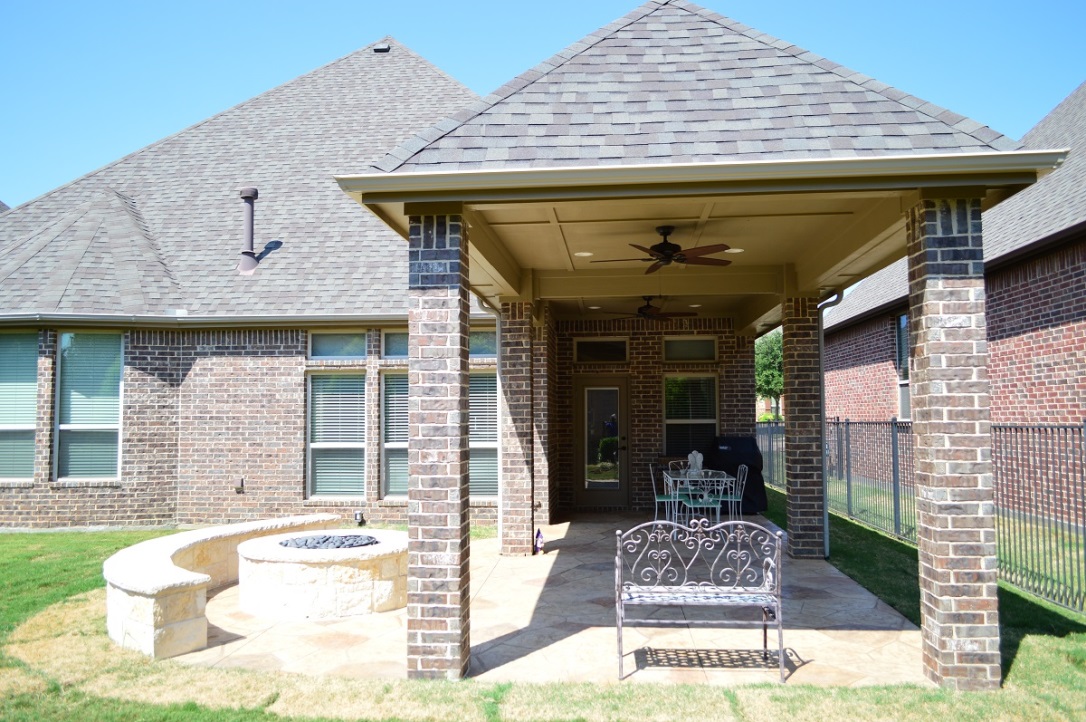
And Yes, It’s OK to mix and match rooflines
When you think about roof shapes, you probably automatically envision a gable or hip roof, especially in northeast Dallas as these are the most commonly seen on many local homes. However, the truth is, in some circumstances a gable or hip roof is not a viable option for your outdoor living addition. A shed roof may be the best choice instead. The diagrams below that help illustrate the use of a shed roof in conjunction with a gable or hip roof:
Shed roof attached to hip roofs:
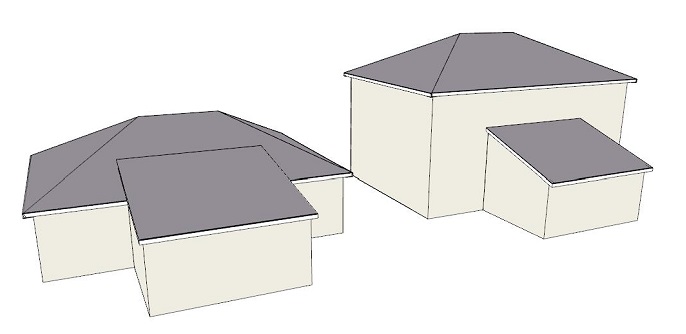
Shed roof attached to gable roofs:
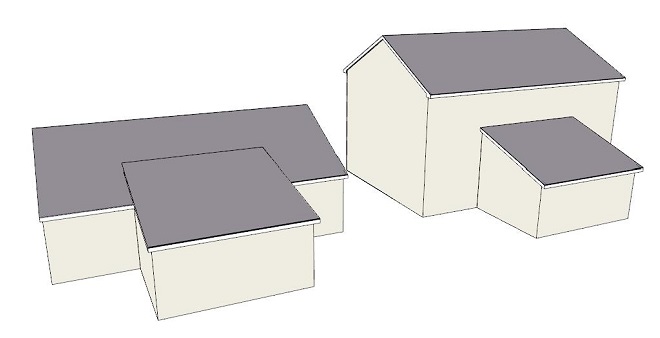
A shed roof is often less complex and works well with a tie-in to one-story home needing a lower roof connection. The presence of architectural elements and upstairs windows that won’t allow a roof or certain roofs and those that cover or cause view obstructions also make great candidates for a shed roof. This roof style is a viable option where the situation calls for a roof style that will not intrude on structural or design elements.
Making the connection – the roof tie In
Another important determination is where to attach your new patio cover or porch to your existing home. This can be achieved through a roof tie-in or a sidewall connection. Indeed in most situations, a roof-tie in connection is more costly than a sidewall connection. Roof tie-in connections require greater experience and expertise to make the connection structurally sound and watertight. This is yet another reason of the importance of choosing a seasoned builder like Archadeck of NE Dallas-Southlake for your outdoor room addition.

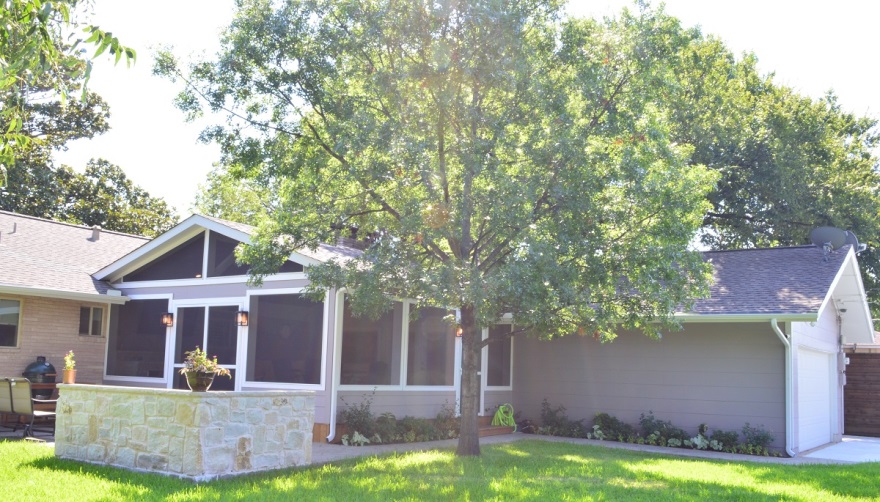
A cricket is not just an insect!
In some cases, it is necessary to add crickets when tying two rooflines together. Crickets, spelled just like the chirping insect that sings us to sleep on summer nights, is an angled-roof structure designed to divert water on a roof. Crickets ensure water is diverted away from the roof of a structure to the ground.
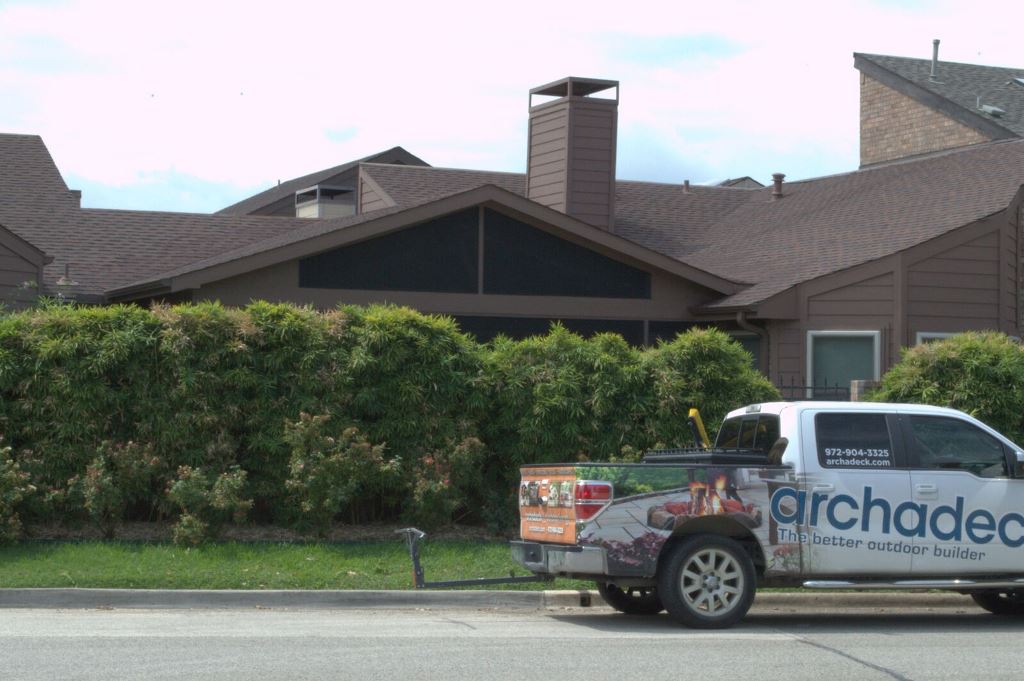
The design for the new screened porch roof is what we refer to as a shed-to-gable roof. Archadeck of NE Dallas-Southlake tied the new roof into the existing roof using a cricket. Read more about this project in Farmers Branch in our feature blog Archadeck of NE Dallas-Southlake make the most of limited space in Farmers Brach, TX
As you can see, choosing the right roof for your outdoor addition is more important than you may think. Outdoor room additions have become a highly desired feature among home buyers because of the way they enhance entertaining opportunities and their aesthetic appeal. This is just one of the ways in which Archadeck brings value to the homeowner. Our expertly designed and built structures will add value, beauty and enjoyment to your home for many years to come!
Contact us today to schedule your design consultation.

Agustin and Amanda Garza, owners at Archadeck of NE Dallas-Southlake.